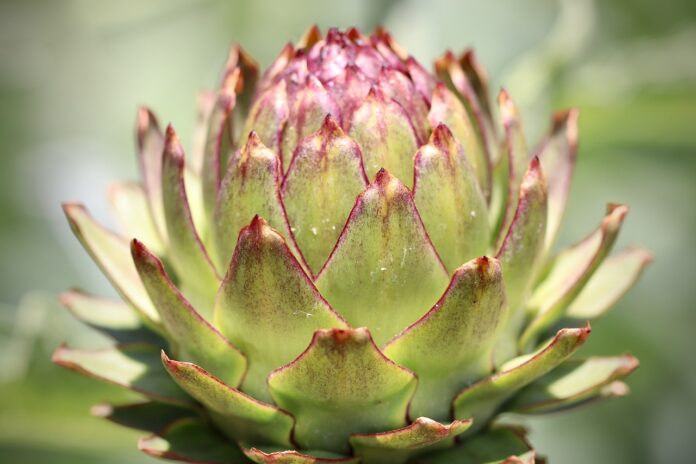The artichoke is a large, flowering vegetable known for its unique appearance and rich, earthy flavor. It belongs to the thistle family and is most recognizable for its rounded, globe-like shape, with thick, layered leaves that are tough and slightly spiny on the edges.
Interesting Facts About Artichoke:
- Ancient history: Artichokes have been consumed since ancient times, with evidence of their use in the Mediterranean dating back to the 8th century BC.
- Greek mythology: Artichokes have a mythological story linked to their origin. In one version, Zeus is said to have transformed a beautiful woman named Cynara into the plant after she rejected his advances. This tale connects to the scientific name for artichoke, Cynara
- “Artichoke Wars”: A major crime-related incident took place in the 1920s. Ciro Terranova, a Mafia figure known as the “Artichoke King,” monopolized the artichoke trade in New York, using aggressive and violent tactics to maintain his control. This led to Mayor Fiorello La Guardia temporarily banning artichokes to disrupt the illegal activity
- Roman delicacy: The Romans considered artichokes a delicacy and believed they had aphrodisiac properties.
- Global production: Italy is the world’s largest artichoke producer, followed by Egypt, Spain, Peru, and Argentina.
- American cultivation: Nearly all U.S. artichokes are grown in California, primarily in the town of Castroville, known as the “Artichoke Capital of the World.”
- Artichoke festival: Castroville has hosted an annual Artichoke Festival since 1959, featuring events like cook-offs and the crowning of an artichoke queen. Marilyn Monroe was the first queen of this festival in 1948.
- Cynar liqueur: Artichokes are used to make Cynar, a bittersweet Italian liqueur that has been produced since 1952.
- Nutritional powerhouse: Artichokes are packed with fiber, vitamin C, and antioxidants, particularly a compound called cynarin, which may support liver health.
- Seasonality: While available year-round in California, peak artichoke seasons are in the spring (March-May) and early fall.
- Sustainability efforts: Some large growers in the U.S., like Ocean Mist, are shifting toward organic practices and pesticide-free methods.
- Tightly closed leaves: When buying artichokes, select those with tightly closed leaves. A good artichoke should also squeak when squeezed.
- Cooking tip: Soaking artichokes in lukewarm water with salt or vinegar helps remove trapped insects or debris from between the leaves.
- Frost-kissed artichokes: Artichokes exposed to frost may develop a brownish hue on the outer leaves, but this doesn’t affect their taste. These “frost-kissed” artichokes are often sweeter.
- Heirloom varieties: While the classic “globe” variety is most common, smaller farms are experimenting with heirloom varieties enjoyed in Mediterranean regions for centuries.
- Labor-intensive: Artichokes require extensive manual labor to cultivate and harvest, making them relatively expensive compared to other vegetables.
- Artichoke hearts: These are considered the most flavorful and tender part of the plant, often used in gourmet dishes and preserved in oil or brine.
- Artichoke tea: In Vietnam, a type of herbal tea is made from the stems, roots, and leaves of artichokes, known for its earthy and slightly sweet taste.
- Preserving color: Once cut, artichokes discolor quickly, even faster than apples. To slow this, immerse the cut pieces in water with lemon juice.
- Versatile vegetable: Artichokes can be boiled, steamed, baked, grilled, or stuffed. The leaves are typically pulled off, and the tender parts are eaten by scraping them with the teeth.
